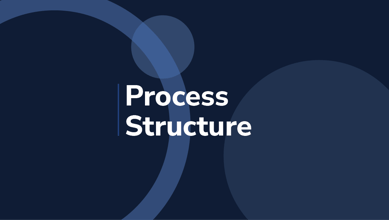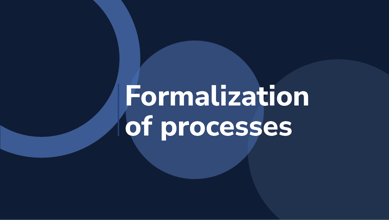Finances
What are they? Which are their main functions, their biggest challenges, etc.
Introduction
What will you find on this page?
What is the Financial Area of a company?
Every company requires an effective Financial Area correctly organized to manage the finances of the company as well as its budget. This area is in charge of assuring the economic viability of the company since it controls the accounting balances and their results. The management of financial resources in a company is a complex task that will determine the investment in human, material, symbolic or social capital funds. Next, we will provide further information about this large area
Delve deeper into our
Business Concepts

What is a macro process?

Process structure

Formalization of processes
Short history about its beginning and development through time
Structure of the area and functions of its subsections
In other words, Finances has four main responsibilities:
- Monitoring and planning, which include the accounting information system.
- Functions derived from the management, control, and protection of the treasury and other liquid assets.
- Several financial functions or of an unusual type. For instance, loan granting or special concessions.
- Functions derived from secondary services under the control of the financial department. For instance, the management of property costs associated with the operations.
Therefore, we can say that its functions can be grouped into: planning, advicing and decision making. In the first one, we can find budget creation and design of financial action diagrams. In the second one, funds movement is strategically planned and assessed in order to advise managers on the task of making decisions. And, finally, in the third one, resources are provided to reach the objectives set beforehand. Additional functions can be, for instance, give advice on which way of investing is better to produce a surplus or manage certain purchases, update insurance policies and deposits and prevent the impact that certain external factors may have on the economy of the company.
Finance: numbers and logic come together to guide the company towards growth and stability.
Finance in organizations
Main challenges faced in the Financial Area
In addition, companies usually have to deal with late payments so they find it difficult to fulfill their contractual obligations. The solution to this problem is to take out a loan greater than usual so that you can be prepared to address the issues that may arise due to delays in payment. Companies also have problems with the number of people they have to hire; in this case, it is vital that you assess costs and profits according to the time needed for each activity.
Finally, it is highly recommended that information is properly stored in programs that are updated over time. Otherwise, if we talk about a big company, for instance, and a customer buys something in installments, the information about pending payments could be lost and you may not do a follow-up of it. Also, information can be scattered, not be accessible, or not be right to do an assessment. Therefore, it is important that the database is well organized and available to the people in charge, as well as to be handled responsibly. Moreover, you have to make sure that the software you use is able to integrate data quickly and effectively.
Tips to have in mind when planning the Financial Area of a company
Delves into the relationship between Finance and business
What do we do in Drew?
We believe that clear processes, supported by the right technology, create an environment where people work happier, and thus make your company more productive.Supplementary material
Resources and editorial content
Practical resources on the main challenges and solutions that every company has.
Finance sessions
Meetings dedicated to particularize different problems that transit the current organizations.
Conclusion
Therefore, it is very important to constantly think about your employees and their training. Moreover, it is vital for management that the accountant delivers regular accounting sheet reports and that he/she uses reliable metrics and parameters. The better the quality of the overview, the faster will be the analysis and the better will be the resolution of problems. All this should be done so that you can guarantee the excellent functioning of the company.
%20(1).jpg?width=300&name=wp9131686%20(1)%20(1).jpg)
